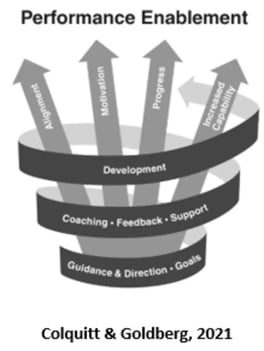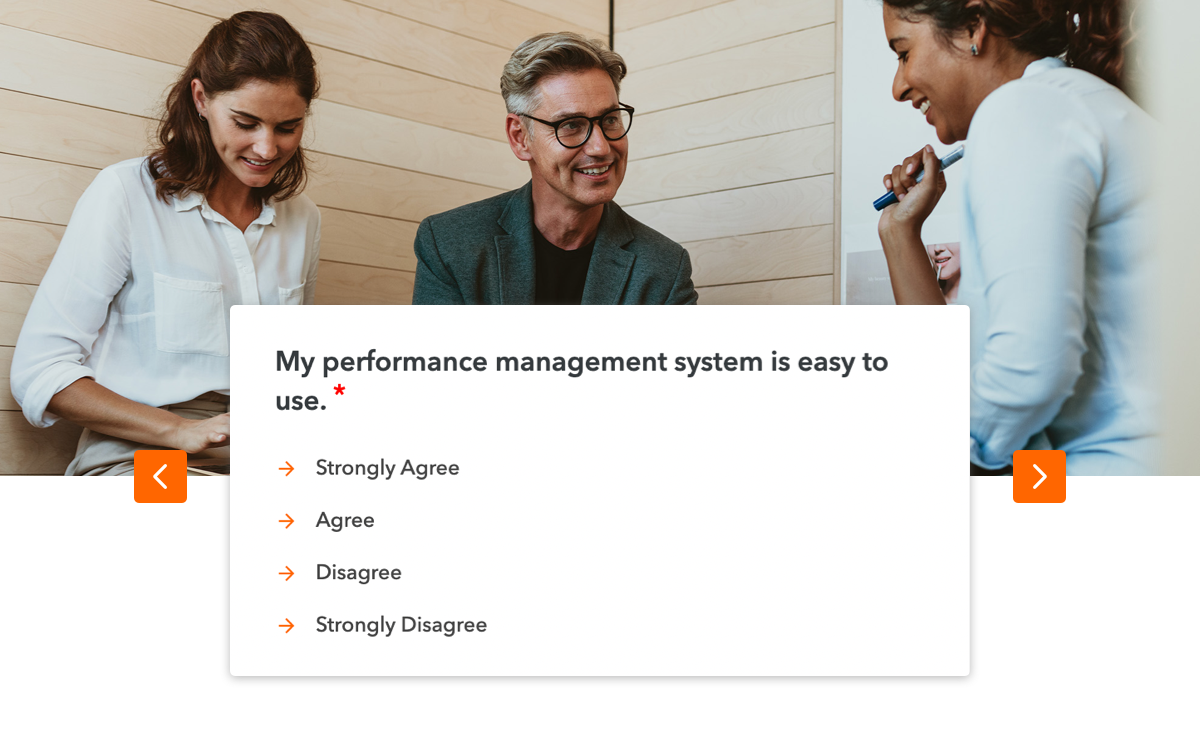As we near the end of the year, you’re not just looking back at what’s already happened — you’re also looking ahead, making predictions and plans for the future. It’s the perfect time for your HR team to prepare for shifting trends and lasting changes, like the ones we’ve seen in performance management. Traditional performance management has long been unpopular and ineffective, and it was already evolving when the pandemic hit.
Right away, it became apparent that many companies’ performance management processes were not agile — they were “ineffective, frustrating, and too rigid.” Companies needed to develop performance management plans that can adapt and remain effective during times of change. They also needed to give employees what they want: clear expectations and frequent, effective feedback.
That’s why today’s performance management trends are turning toward performance enablement.
If your #PerformanceManagement plan crumbled during COVID-19, explore the difference a #PerformanceEnablement framework can make:What is Performance Enablement?
Performance enablement is a different way to manage performance, with an emphasis on employee engagement, career development, and continuous feedback. One talent management expert describes it as a three-part model that allows companies and employees to meet their goals. These are the three parts of a performance enablement framework:
- Set collaborative goals.
- Coach employees with continuous feedback and support.
- Help employees constantly develop their skills.
The performance enablement model centers employees and values their input, skills, and strengths. It helps employees find purpose and fulfillment in their work and understand how they contribute to company success. When your employees are invested in their own success, performance management statistics show that they are more likely to stay at your company. Performance enablement also emphasizes open communication between managers and employees, considering the fact that 92% of employees want more communication.
It’s clear how enabling better performance beats simply managing it. Here are some ways to incorporate performance enablement into your strategy in 2023.

1. Give Project-Based Performance Reviews
With project-based reviews, employee performance is evaluated after each project. Managers can get feedback from colleagues their direct reports worked with on the project. Project-based reviews supplement regular reviews, adding more context and creating a complete view of employee performance. Project-based reviews also make it easier to track performance over time.
These reviews are part of a performance enablement model because they give managers the chance to provide coaching and give feedback employees can use on their next project. They ensure employees receive feedback that is fresh, relevant, and consistent. Project-based reviews also help managers better prepare for performance reviews, ensuring they can recognize employees’ accomplishments, check in on areas of improvement, and give constructive feedback.
2. Work Together to Set Goals
Did you know that 67% of employees whose managers help them set goals are engaged? Goal setting establishes clear expectations and helps employees stay on track at work. Goals show employees where their work fits into the big picture of company success. They can also indicate to managers if employees are struggling or point to their strengths and help managers give more effective feedback.
Did you know #goalsetting is key to engaging your employees? 67% whose managers help them set goals are engaged at work:Goals can also motivate employees, especially when they participate in creating those goals. In a performance enablement model, goals shouldn’t just be tasks or projects the employee needs to complete. They should also include professional development goals designed not only to improve performance but also to facilitate employees’ career growth.
Gallup also points out that goals should be flexible. Managers should be able to work with employees to adjust their goals if the business’s needs or other conditions change. Agile goals empower all team members, encouraging managers to notice team members’ unique strengths and employees to look for innovative solutions.
3. Use Performance Management Software
There are lots of performance review software benefits — here are just a few:
- Manual reviews demand lots of time, effort, and paperwork, while software can handle it all digitally — complete with performance review templates, automated completion reminders, and a dashboard for analyzing results.
- Performance appraisals can be created, launched, and completed for all types of employees, including hourly and salaried employees, in-person and remote employees, and more, all from one central place.
- Cloud-based performance management systems keep accessible, accurate historical performance records, which managers and employees can look back on during reviews.
- Get access to in-depth analysis tools and review results to recognize patterns, spot top-performing employees, and get a read on overall performance at your organization.
The best performance management software offers tools you and your managers can use for effective reviews every time:
- 1:1 Workspaces where managers and employees can communicate on a daily basis
- A variety of performance review templates for a well-rounded evaluation
- Goal setting and tracking tools to stay on track and create a performance record
4. Don’t Just Manage, Coach
When you think of bad performance reviews, you probably think of meetings where the manager does all the talking but still doesn’t offer any positive feedback or even actionable advice. Often, managers just give directions and then look back at how employees performed. In a performance enablement model, managers are trained on how to coach their employees — in other words, to provide feedback that helps them improve.
An effective manager-as-coach asks questions instead of providing answers, supports employees instead of judging them, and facilitates their development instead of dictating what has to be done.
- via Harvard Business Review
This doesn’t just benefit your employees, who get advice they can use and support from their managers. It can also result in higher performance and job satisfaction among managers. Coaches build trust among their employees, help them connect to the company’s mission and goals, and can help them reach their full potential at work.
When it comes to performance management, gone are the days of once-annual reviews and one-way conversations. Today, the most effective way to manage performance is to adopt a performance enablement framework that prioritizes communicating, collaborating, and supporting employees to do their best work.
Power your performance enablement strategy with ClearCompany. Our Performance Management Software has the tools you need for goal-setting, ongoing feedback, and more. See how you can enable better performance with ClearCompany — sign up for a personalized demo today.



